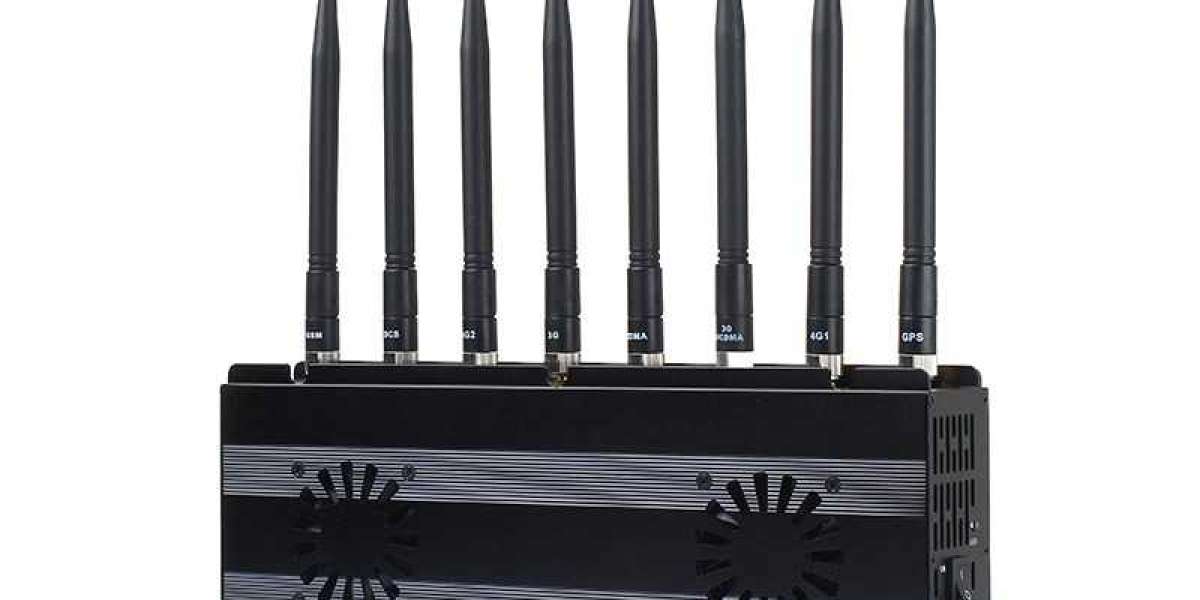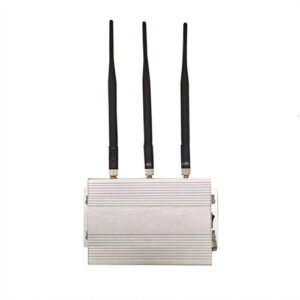The dual application of jammers in military and civilian fields: a technological weapon from battlefield to urban security
With the rapid development of wireless communication technology, the density and sensitivity of information transmission in the air are increasing. At the same time, jammers, as an electronic device that can actively block signals in a specific frequency band, have gradually expanded from military high-tech to daily civilian fields. Whether in the front-line battlefield, anti-terrorism operations, or in school exams, prison management, meeting confidentiality, anti-secret photography and other scenarios, jammers play an increasingly important role.
1. The basic principle of jammers
The core mechanism of jammers is to transmit high-power wireless signals to the target frequency band, and prevent legitimate communication equipment from receiving normal signals through "noise coverage" or "deceptive signals", thereby achieving the effects of interference, shielding, and suppression. According to the purpose, jammers are roughly divided into the following categories:
- GPS jammer: used to block global positioning system signals;
- Mobile phone jammer: mainly shields cellular networks such as GSM, 3G, 4G, and 5G;
- WiFi jammer: blocks 2.4GHz and 5GHz wireless network communications;
- UAV jammer: specifically interferes with remote control and image transmission signals to drive away drones;
- Multi-band integrated jammer: integrates the above functions and has extensive jamming capabilities.
2. Application of jammers in the military field
In modern warfare, information control has become a key factor affecting the victory or defeat of the war. As an important part of electronic warfare, jammers play an important role in the following scenarios:
1. Anti-UAV operations
With the widespread deployment of commercial and military drones, low-altitude threats have risen sharply. Jammers can cause drones to lose control and return or crash by blocking remote control signals, GPS navigation, and video return channels. At present, the armies of various countries are generally equipped with handheld, vehicle-mounted or fixed anti-UAV jamming systems.
2. Battlefield communication suppression
In ground combat or special operations, using jammers to suppress enemy wireless communications and cut off their coordination and command capabilities is the key to improving one's own combat advantage. For example, the US "Spiral Project" system and the Russian "Krasuha" series of jamming platforms both have the ability to suppress ground, satellite and tactical communication systems.
3. Navigation deception and anti-missile jamming
High-end jammers can achieve "deceptive" interference, misleading missile navigation systems by simulating false GPS signals and causing them to deviate from their targets. Israel has successfully interfered with the precision-guided munitions systems of hostile armed forces by deploying jammers in many military operations.
3. Application of jammers in the civilian field
Although jamming technology originated from the military, it also has extensive and legitimate civilian needs in modern society, especially in terms of information security, privacy protection and public order maintenance.
1. Anti-cheating in school exams
In high-risk occasions such as the college entrance examination and qualification examinations, jammers can block candidates from using mobile phones to search the Internet or exchange information, effectively eliminating electronic cheating. Examination halls and training institutions in many countries and regions have routinely deployed low-power cell phone jammers for examinations.
2. Communication control in prisons and detention centers
Illegal mobile phones are widely present in prisons, which may lead to serious problems such as jailbreaks, fraud, and gang communications. Through directional or regional jammers, prisoners can be prohibited from using mobile phones to communicate in specific areas to ensure prison order.
3. Anti-secret photography and meeting confidentiality
In business confidentiality meetings, government dignitaries’ meetings, military bases, RD centers and other occasions, the deployment of small mobile phones and WiFi jammers can prevent potential eavesdropping, secret photography and data leakage, and maintain information security.
4. Anti-secret photography and privacy protection scenarios
Hotels, bathrooms, dressing rooms, cinemas and other places where micro-secret photography devices are easily installed can prevent WiFi or Bluetooth pinhole cameras from uploading image data through signal jammers, thereby improving user privacy and security.
4. Development trend of jammers and regulatory challenges
Although jammers are widely used, their technical abuse may also cause problems. For example, the illegal use of high-power military jammers device in public places may affect normal user communications, aviation navigation and even the operation of medical equipment. Therefore, countries generally set strict regulations on its use and sale:
- Only specific industries (military police, judicial organs, educational institutions) can apply for use according to law;
- Civil jammers sold on the market must control power and frequency band range;
- Some countries (such as the United States) completely prohibit personal use of jammers.
In the future, jammers will continue to develop in the direction of "directional precision", "intelligent control", "spectrum identification", and "enhanced countermeasures". For example, new anti-drone systems will combine AI recognition technology to authenticate the target before implementing interference, reducing the risk of accidentally injuring friendly or legitimate equipment.
Conclusion
As a technological product originating from the military, jammers are playing an increasingly important role in the field of security and privacy protection. How to strike a balance between ensuring social security and respecting personal freedom of communication is a common issue faced by future technological evolution and policy supervision. Whether it is high-end military confrontation or privacy protection in daily life, the existence of jammers reminds us that in the wireless world, controlling "signals" is mastering "order".





